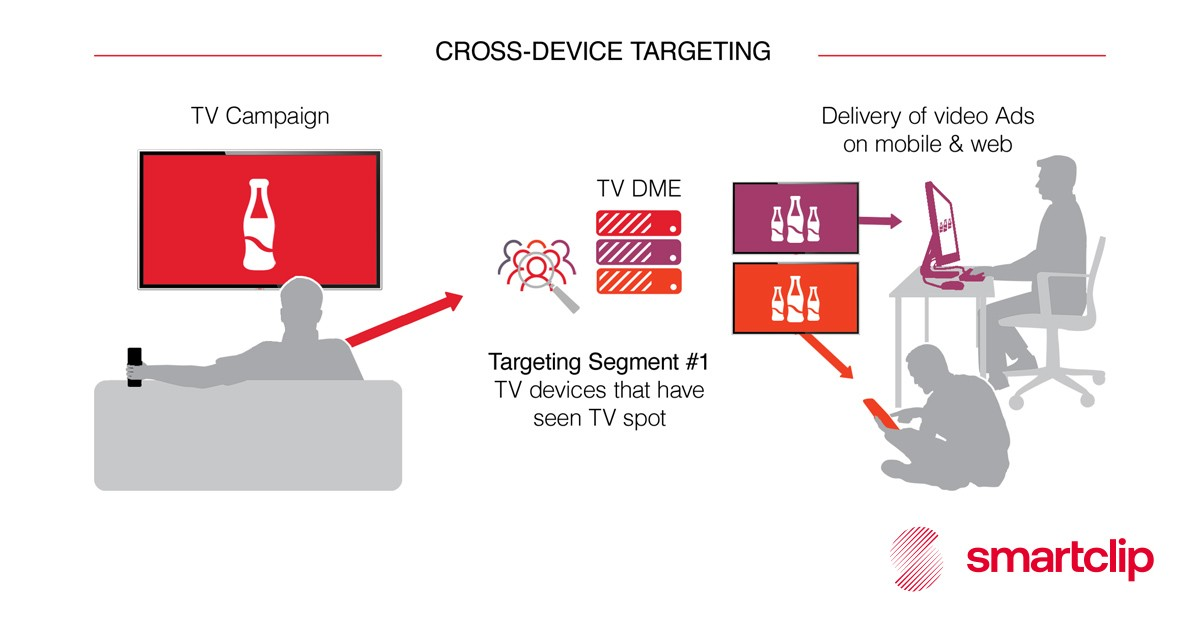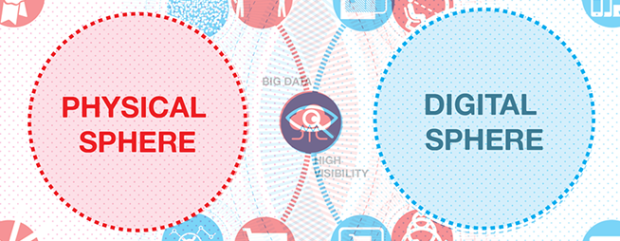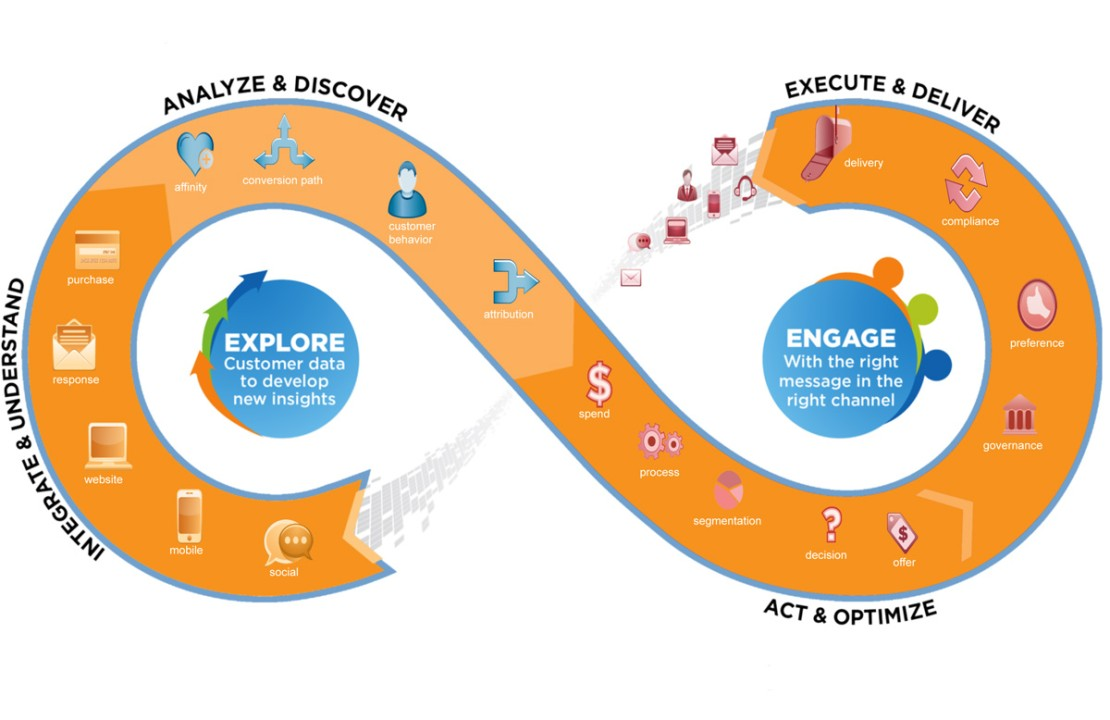15 min to read
In the bustling world of business, finding the perfect blend of online and offline marketing strategies can feel a bit like attempting to capture lightning in a bottle. Yet, it's this very combination that can set your business aglow, attracting customers from both the digital and the tangible worlds. In this guide, we'll explore how to weave these seemingly disparate threads into a cohesive tapestry that not only promotes your business but also enhances its presence in the marketplace.
As a digital agency we understand that from the power of social media to the tactile impact of physical flyers, we'll show you how to create a symphony of marketing strategies that resonate with your audience. Join us as we unlock the magic of integrating online and offline marketing to propel your business to new heights.
You could work with us, the leading digital marketing agency in Lisbon, Portugal.

Understanding Your Audience
Before drafting any marketing campaign, the first step is to deeply understand who your target audience is. This identification process encompasses demographic information such as age, gender, and income, but it also dives deeper into psychographics, including interests, values, and buying behaviors. By painting a comprehensive picture of your audience, you can tailor your marketing strategies to speak directly to them, thus increasing engagement and conversion rates.
Once you know who your audience is, the next step is to find out where they spend their time. For younger demographics, this might mean a stronger presence on social media platforms like Instagram or TikTok, while an older audience may be more reachable through traditional newspapers or radio. Integrating online and offline marketing means aligning your presence with your audience's locations, ensuring your message is seen and heard across the appropriate channels.
Offline Tactics That Work
Never underestimate the power of print. Flyers, brochures, and business cards can make a tangible impression that digital marketing can't match. They're especially effective in local markets or at events where potential customers can take something physical away with them. Design matters here; your print materials should be visually appealing and reflective of your brand's identity. From personalized mug printing to eye-catching posters, the possibilities are endless. Attending industry events, trade shows, and networking meetups can significantly boost your offline presence.
These opportunities allow you to meet potential customers face to face, building relationships that are harder to forge online. Hosting your events or workshops can also attract a local audience, giving you a platform to share your expertise and connect with your community on a personal level.
Crafting Your Message
Your brand's message must be consistent across all platforms, online and offline. This creates a cohesive brand experience that aids in recognition and recall. Whether a customer sees your advertisement online or walks past a poster in the street, the core message, tone, and imagery should be unmistakably yours. Consistency strengthens your brand identity and fosters trust among your audience.
Humans are naturally drawn to stories. Incorporating storytelling into your marketing efforts can captivate your audience and make your brand more memorable. Share the origins of your company, customer success stories, or how your products are made. These stories can be shared through blog posts, social media, or even in print materials. Storytelling engages your audience and adds a human touch to your brand.
Leveraging Social Media
Social media platforms are powerful tools for engaging directly with your audience. Creating content that resonates with your followers is key to success in these spaces. This might include informative posts, interactive polls, or behind-the-scenes looks at your operations. Engaging content encourages shares and comments, increasing your visibility and strengthening your community.
In addition to organic content, social media platforms offer targeted advertising options. These paid ads can be customized to reach specific segments of your audience based on demographics, interests, and behavior. With the right creative approach, these ads can drive significant traffic to your website or physical store, offering a measurable return on investment.
Monitoring and Adapting
Both online and offline marketing efforts provide data that can be analyzed to assess performance. Online, tools like Google Analytics can track website traffic and engagement. Offline, customer surveys or tracking promotion codes can offer insight into which strategies are driving sales. This analysis is crucial for understanding what's working and what's not.
The marketing landscape is constantly evolving, and success requires adaptability. By monitoring the effectiveness of your strategies and staying informed about trends, you can quickly adjust your approach. This agility enables you to seize new opportunities, experiment with innovative tactics, and continuously refine your marketing mix to keep your business growing.

Integrating online and offline marketing strategies is not just about spreading your message through multiple channels; it's about creating a unified brand experience that resonates with your audience, wherever they are. The synergy between digital and physical realms can ignite a powerful connection with your customers, fostering loyalty and driving growth.
By understanding your audience deeply, crafting a consistent message, leveraging the dynamic power of social media, and not undervaluing the impact of traditional print tactics, you set the stage for a comprehensive marketing strategy that can adapt to the changing landscape. Remember, the magic lies in the blend—using each platform's strengths to complement the others, thus ensuring your business shines brightly in a crowded market. Stay nimble, keep learning, and your marketing magic will not only capture but also captivate.
Integrating online and offline marketing strategies is not just an innovative approach but a necessary evolution in the way businesses connect with their audience. This synergy between two traditionally separate marketing realms offers a seamless, consistent brand experience for consumers and creates a cost-effective, comprehensive marketing strategy. Let's delve into how businesses can harness this integration effectively, maintaining a structured topic approach throughout.
Leveraging Cross-Promotion
The initial step in merging online and offline marketing efforts involves utilizing one medium to enhance the other. For instance, an extensive television advertising campaign gains additional momentum when snippets or teasers are shared on social media platforms, creating a buzz that extends the campaign's reach and engagement. Similarly, offline marketing avenues can spotlight online initiatives, such as digital events or special promotions, drawing in an audience that spans both realms. This method of cross-promotion ensures a cohesive marketing message that resonates across all channels.
The fusion of online and offline marketing strategies marks a transformative shift in how businesses approach their comprehensive marketing efforts. This convergence is rooted in the principle of cross-promotion, where one medium is leveraged to amplify and enhance the other, thus creating a unified marketing message that resonates across all channels. This strategic approach not only broadens the campaign's reach but also deepens engagement with the target audience by providing a seamless, integrated brand experience.

Enhancing Television Campaigns through Social Media
A prime example of this integration is the way in which traditional television advertising campaigns can gain additional momentum through the strategic use of social media platforms. When an extensive TV campaign is underway, snippets, teasers, or exclusive behind-the-scenes content shared on social media can generate significant buzz. This not only serves to extend the campaign’s reach beyond its initial audience but also adds a layer of interactivity and immediacy that television alone cannot provide. By engaging viewers online, where they can comment, share, and interact with the content and with each other, the campaign transcends its original format, becoming more dynamic and expansive.
Leveraging Offline Marketing to Spotlight Online Initiatives
Conversely, offline marketing avenues possess a unique strength in their tangible, physical presence, which can be effectively used to spotlight online initiatives. For example, traditional marketing materials such as flyers, posters, and billboards can feature QR codes or URLs that direct the audience to digital events, special online promotions, or exclusive web content. This strategy not only draws attention to online initiatives but also bridges the gap between the physical and digital realms, encouraging an audience that may not be as digitally active to engage online. Such tactics ensure that offline efforts contribute directly to the digital strategy, weaving together a cohesive narrative that spans across both realms.
Cross-Promotion: A Strategy for Cohesive Messaging
The essence of cross-promotion lies in its ability to maintain a cohesive marketing message across diverse platforms. By ensuring that all marketing efforts, whether online or offline, are aligned and mutually reinforcing, businesses can present a unified brand image. This consistency is crucial for building brand recognition and trust, as it provides consumers with a consistent experience regardless of how or where they encounter the brand. Whether it’s a consumer watching a TV ad and then seeing related content on social media, or someone encountering a poster for an online event while walking downtown, each touchpoint reinforces the others, creating a multifaceted yet unified brand presence.
The Impact of Cross-Promotion on Reach and Engagement
The strategic integration of online and offline marketing through cross-promotion significantly enhances both the campaign's reach and the depth of consumer engagement. By tapping into the strengths of each medium—be it the broad reach and visual impact of television or the interactivity and targeting capabilities of social media—brands can create more impactful, engaging marketing campaigns. This not only ensures that the marketing message is heard by a wider audience but also that it resonates more deeply with individuals, fostering a stronger, more meaningful connection with the brand.
In conclusion, the initial step of merging online and offline marketing efforts through cross-promotion is pivotal in today's fragmented media landscape. It ensures that regardless of the medium, the brand’s message is amplified, reaching a broader audience while also engaging consumers on a deeper level. This strategy highlights the importance of a cohesive, integrated approach to marketing that leverages the unique strengths of both online and offline channels to create a more dynamic, impactful brand presence.
Bridging Offline and Online Customer Experiences
To foster a truly integrated marketing ecosystem, it's crucial to encourage offline customers to engage online. This can be achieved by strategically placing your website URL and social media handles on physical marketing materials like receipts, banners, and advertisements. Offering incentives for digital engagement, such as discounts for online newsletter sign-ups or rewards for social media interaction, can effectively transition an offline audience into active online participants. This strategy not only broadens your digital footprint but also reinforces your brand's presence across multiple touchpoints.

Strategic Placement of Digital Cues in Physical Spaces
The journey towards a cohesive marketing ecosystem begins with the strategic placement of digital cues within physical marketing materials. By embedding your website URL and social media handles on tangible items such as receipts, banners, product packaging, and in-store advertisements, businesses create a direct pathway for offline customers to explore their online presence. This method serves as a constant, subtle invitation for customers to step into the digital realm, ensuring that every physical interaction carries the potential to extend into a digital engagement. It’s a practice that leverages routine customer interactions—such as checking a receipt or noticing a banner—to foster a deeper connection with the brand online.
Incentivizing Digital Engagement
To effectively transition an offline audience into active online participants, offering tangible incentives for digital engagement becomes crucial. Such incentives can range from discounts exclusive to online newsletter subscribers to rewards for interacting with the brand on social media platforms. For example, a QR code on a physical flyer that leads to a special promotion on a website not only drives online traffic but also adds value to the customer's interaction with the brand. Similarly, running a social media contest that requires participants to visit a physical location and post about it online can create a dynamic interplay between offline experiences and online engagement. These incentives not only motivate customers to engage digitally but also help in collecting valuable data on customer preferences and behaviors, which can inform future marketing strategies.
Broadening the Digital Footprint
Encouraging offline customers to engage online significantly broadens a brand's digital footprint. Each new follower on social media, subscriber to a newsletter, or visitor to a website contributes to expanding the brand's online visibility and presence. This expanded digital footprint enhances the brand’s ability to reach a wider audience, engage with customers on multiple levels, and increase its relevance in the digital ecosystem. Moreover, it opens up new avenues for data-driven insights, allowing brands to better understand their audience and tailor their marketing strategies accordingly.
Reinforcing Brand Presence Across Touchpoints
A key advantage of this strategic encouragement of online engagement is the reinforcement of the brand's presence across multiple touchpoints. When customers interact with a brand both offline and online, it creates a multifaceted brand experience that is more engaging and memorable. This consistency across touchpoints not only strengthens brand recognition but also builds trust and loyalty among consumers. For instance, when a customer who initially interacts with a brand in a physical store continues that interaction online through social media or the brand’s website, it creates a continuous narrative that enhances the overall brand experience.

Synthesizing Data for Targeted Marketing
A sophisticated integration strategy employs a combination of direct mail, email marketing, and online ad targeting. Utilizing mailing lists to segment and target audiences allows for the creation of personalized marketing campaigns that resonate on a more personal level with consumers. This level of personalization is achieved by harmonizing offline and online data, leading to highly targeted and effective marketing initiatives that speak directly to the consumer's preferences and behaviors.
Mailing Lists for Segmentation and Targeting
A cornerstone of this strategy involves the use of mailing lists to segment and target audiences precisely. For instance, a retail clothing brand might use purchase history data from both their online store and physical locations to segment their customers into different interest groups, such as casual wear enthusiasts, formal wear seekers, or sports apparel aficionados. This segmentation allows for the creation of direct mail pieces that are specifically tailored to the interests of each group. A customer known for purchasing formal wear, for example, could receive a beautifully designed catalog showcasing the brand’s latest collection of suits and dresses, along with an exclusive invitation to a VIP in-store event.
Email Marketing Personalization
Parallel to direct mail efforts, email marketing can be personalized to an even greater degree thanks to the rich behavioral data available from online interactions. Continuing with the example of the retail clothing brand, email campaigns could be tailored not just based on purchase history but also on items viewed online, items added to (but removed from) the shopping cart, and even the customer’s browsing patterns. An email to a customer who frequently browses but seldom purchases could include a special discount code to incentivize their first online purchase or a reminder of the items they've shown interest in, creating a sense of urgency with a message like, "Grab them before they're gone!"
Online Ad Targeting Through Data Harmonization
The true power of this integrated strategy shines through in the harmonization of offline and online data for online ad targeting. Using the combined data from direct mail responses, email interactions, and online behavior, a brand can create highly targeted ad campaigns that appear across social media platforms, search engines, and other digital venues. For example, a customer who recently received a direct mail catalog and browsed formal wear on the website might start seeing targeted ads for the brand's formal wear line on their social media feeds, reinforcing the brand's presence and the relevancy of its offerings. This targeted approach ensures that the ads are not only seen but are also relevant to the individual’s current interests and needs, significantly increasing the likelihood of conversion.
The Impact of Integrated Data on Marketing Effectiveness
The integration of offline and online data for personalized marketing campaigns represents a significant advancement in the ability to engage consumers on a personal level. This strategy acknowledges the multidimensional nature of consumer behavior, capturing their preferences and activities across different channels and using that information to deliver marketing messages that are timely, relevant, and highly personalized. For instance, a home improvement store could use purchase data to identify customers who have recently bought paint and send them direct mail with creative ideas for home decoration, followed by emails linking to how-to guides on their website, and online ads for complementary products like brushes and tape. This seamless integration across channels enhances the customer experience and drives higher engagement rates, fosters brand loyalty, and ultimately, increases sales.
A sophisticated integration strategy that combines direct mail, email marketing, and online ad targeting, supported by the harmonization of offline and online data, offers a powerful way to create personalized marketing campaigns. These campaigns are finely tuned to the preferences and behaviors of consumers, leading to more effective marketing initiatives and a deeper connection between brands and their customers. Through careful segmentation, targeted communication, and data-driven personalization, businesses can achieve unprecedented engagement and effectiveness in their marketing efforts.
Offline Initiatives Driving Online Engagement
Offline marketing endeavors, including participation in trade shows, conferences, and speaking engagements, serve as pivotal touchpoints for driving online engagement. These events allow for the distribution of print materials and direct interaction with potential customers, laying the groundwork for continued engagement on digital platforms. Furthermore, techniques such as warm calling, product demos, and consultations can elevate interest and engagement, which can then be leveraged through online channels to maintain and expand upon these relationships.
Ensuring Brand Consistency
The essence of a successful integration lies in maintaining brand consistency across all marketing channels. Consistent branding, from the messaging to the visual design elements, across both online and offline platforms, is imperative. This consistency not only strengthens brand recognition and trust among consumers but also creates a seamless transition between the digital and physical realms of consumer interaction. For example, aligning the branding elements in TV advertisements with those used in online landing pages offers a unified brand experience that significantly enhances consumer perception and engagement.
The integration of online and offline marketing strategies represents a holistic approach that acknowledges and utilizes the strengths of each platform to create a unified, impactful marketing narrative. By fostering cross-promotion, bridging the offline-online customer experience gap, synthesizing data for targeted campaigns, leveraging offline initiatives for online engagement, and ensuring brand consistency, businesses can achieve a comprehensive marketing strategy that effectively reaches and resonates with their target audience. As the digital landscape evolves, the ability to seamlessly integrate these realms will continue to be a critical element of successful marketing strategies, ensuring that businesses remain connected with their audience across every touchpoint.

FAQ - Frequently Asked Questions
How do I determine the right blend of online and offline marketing strategies for my business?
Determining the right blend of online and offline marketing strategies for your business involves a deep understanding of your target audience, your business goals, and the market landscape. Start by analyzing your audience's behavior and preferences: Where do they spend their time? What media do they consume? And what are their buying behaviors? A data-driven approach, utilizing advanced analytics and customer insights, can provide a clear picture. For instance, if your target audience includes both young adults who are active on digital platforms and older generations who may prefer traditional media, a balanced mix of social media marketing and traditional print or broadcast advertising might be effective. It's also crucial to set clear KPIs for both online and offline efforts to measure their impact accurately. For example, Codedesign has successfully implemented mixed marketing strategies for clients in various sectors by leveraging data analytics to pinpoint the most effective channels for each target segment. This blend not only maximizes reach and engagement but also ensures a higher ROI for marketing spend.
Can you provide examples of effective offline marketing tactics for small businesses?
Effective offline marketing tactics for small businesses often focus on building local brand awareness and fostering community engagement. One powerful tactic is hosting or sponsoring local events, which can create a direct connection with the community and generate positive word-of-mouth. For instance, a restaurant might sponsor a local sports team, offering exclusive deals to team members and fans, or a retail store could host workshops or classes related to their products. Traditional methods like distributing flyers and posters in strategic locations can also be highly effective, especially when they include a compelling call to action, such as a discount or a special offer for first-time customers. Guerrilla marketing tactics, which create unexpected, memorable experiences for consumers, can also generate significant buzz at a relatively low cost. Leveraging these tactics with a creative twist can help small businesses stand out and make a lasting impression on potential customers.
What are some cost-effective ways to integrate online and offline marketing efforts?
Integrating online and offline marketing efforts in a cost-effective manner involves leveraging each channel's strengths to complement the other. One approach is to use offline events to generate online content and engagement. For example, a brand could host a live product launch event and encourage attendees to share their experiences on social media using a specific hashtag, effectively amplifying the event's reach online. Another strategy is to use QR codes in offline advertisements, such as posters or flyers, which direct users to online landing pages with more information or exclusive offers. This not only bridges the gap between offline and online but also allows for tracking the effectiveness of offline ads. Furthermore, email marketing can be integrated with direct mail campaigns by sending follow-up emails to recipients of physical mailers, reinforcing the message and encouraging online actions. These strategies, when implemented effectively, can significantly increase the coherence and reach of your marketing efforts without inflating costs.
How does understanding my audience improve the effectiveness of my marketing strategy?
Understanding your audience improves the effectiveness of your marketing strategy by enabling you to tailor your messaging, channels, and content to meet their preferences and needs. This deep level of insight ensures that your marketing efforts resonate more profoundly with your target audience, leading to higher engagement rates, conversion rates, and customer loyalty. For instance, data analytics can reveal that a segment of your audience prefers engaging video content and shops online using mobile devices. This insight allows for the optimization of your digital marketing strategy to focus on mobile-friendly video content, significantly increasing the effectiveness of your campaigns. Additionally, understanding the nuances of your audience's demographics, psychographics, and behavior patterns enables you to predict trends and adapt your strategies accordingly, ensuring they remain relevant and impactful. Codedesign has helped clients across industries to leverage audience insights for creating highly targeted and successful marketing campaigns, demonstrating the power of informed strategy design.
In what ways can social media platforms enhance offline marketing campaigns?
Social media platforms can significantly enhance offline marketing campaigns by extending their reach, creating engagement opportunities, and building a community around the brand. For instance, promoting offline events on social media platforms can increase attendance and participation. Before, during, and after the event, brands can engage with attendees through live updates, behind-the-scenes content, and interactive polls or contests, creating a buzz online that complements the offline experience. Moreover, social media can be used to continue conversations started through offline channels, deepening customer relationships and fostering brand loyalty. User-generated content from offline experiences shared on social media also serves as powerful, authentic endorsements of the brand. By integrating social media with offline efforts, brands can create a seamless customer journey that leverages the strengths of both worlds, as seen with several Codedesign clients who have successfully bridged the gap between online engagement and offline experiences.
What methods can I use to ensure my brand's message is consistent across all marketing channels?
Ensuring brand message consistency across all marketing channels requires a strategic, centralized approach to content creation and distribution. Start by developing a comprehensive brand guideline that includes your brand's voice, tone, visual elements, and core messages. This guideline should be the foundation for all content, whether online or offline, ensuring a cohesive brand identity. Employing a content management system (CMS) or marketing automation tools can also help streamline content creation and distribution, making it easier to maintain consistency. Additionally, regular audits of all marketing materials and channels are crucial to identify and rectify any discrepancies. Coordination among different teams is vital; for instance, the digital marketing team should work closely with the events team to ensure that messaging at a live event aligns with ongoing online campaigns. Codedesign has effectively implemented these methods for clients, ensuring that their brand message is not only consistent but also compelling across all touchpoints.

About Bruno GavinoBruno Gavino is the CEO and partner of Codedesign, a digital marketing agency with a strong international presence. Based in Lisbon, Portugal, with offices in Boston, Singapore, and Manchester (UK) Codedesign has been recognized as one of the top interactive agencies and eCommerce agencies. Awarded Top B2B Company in Europe and Top B2C company in retail, Codedesign aims to foster personal relationships with clients and create a positive work environment for its team. He emphasizes the need for digital agencies to focus on data optimization and performance to meet the increasingly results-driven demands of clients. His experience in digital marketing, combined with a unique background that includes engineering and data, contributes to his effective and multifaceted leadership style. |

About CodedesignCodedesign is a digital marketing agency with a strong multicultural and international presence, offering expert services in digital marketing. Our digital agency in Lisbon, Boston, and Manchester enables us to provide market-ready strategies that suit a wide range of clients across the globe (both B2B and B2C). We specialize in creating impactful online experiences, focusing on making your digital presence strong and efficient. Our approach is straightforward and effective, ensuring that every client receives a personalized service that truly meets their needs. Our digital agency is committed to using the latest data and technology to help your business stand out. Whether you're looking to increase your online visibility, connect better with your audience, get more leads, or grow your online sales. For more information, read our Digital Strategy Blog or to start your journey with us, please feel free to contact us. |
CodeDesign is leading:
- Digital Agency
- Digital Marketing Agency
- Digital Ecommerce Agency
- Amazon Marketing Agency



Add comment ×